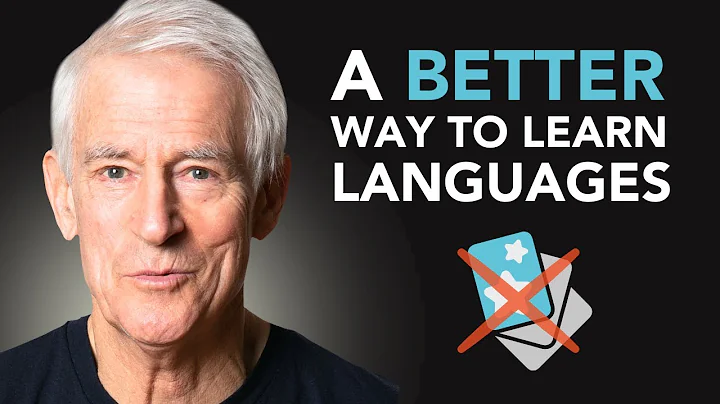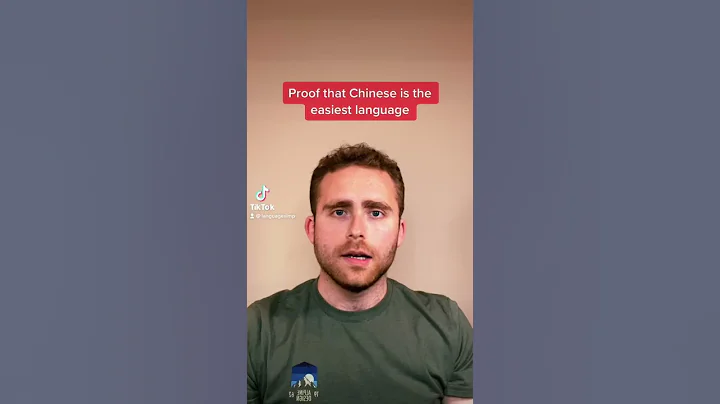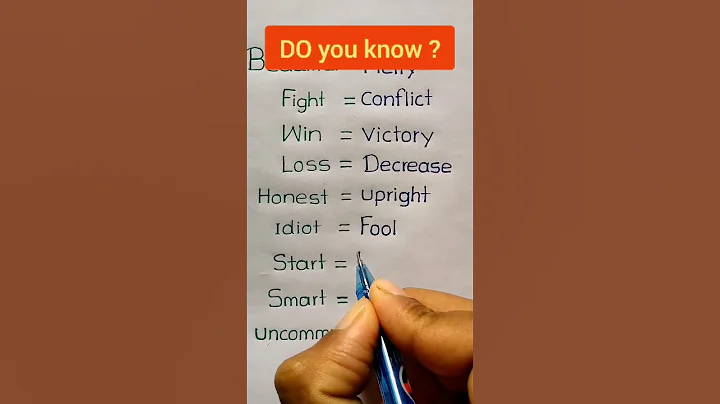Unit Test Questions
Time: 45 minutes Full score: 100 points
. Multiple choice questions (This question has 15 questions, each question has 3 points, totaling 45 points. Among the four options listed in each question, only one of them meets the requirements of the question)
. A certain crew is preparing to shoot a documentary film commemorating Sun Yat-sen. The crew filmed a certain venue in Honolulu, where witnessed the first bourgeois revolutionary group in China established by Sun Yat-sen. Sun Yat-sen established here is ( )
A. Xingzhonghui B. strongly learn
C. Huaxing Club D. Tongmenghui
2. " Cambridge Chinese Late Qing History " records: "In August 1905, after ten years of sporadic and uncooperative actions, the various hills of the movement jointly formed a single anti-Qing organization, which became what the revolutionaries believed to have truly seized power in the next few years." The "anti-Qing organization" jointly formed in the material is ( )
A. Tongmenghui B. Yihequan
C. Restoration Meeting D. Kuomintang
3. After the establishment of the China Tongmenghui , there were 379 people with the status examinations within three years, including 354 students from China and abroad, 10 officials and famous intellectuals, 8 teachers and doctors, 6 capitalists and businessmen, and 1 poor peasant. From the above-mentioned membership composition, we can see ( )
A. Tongmenghui's proposition has been widely recognized
B. Tongmenghui is China's first bourgeois revolutionary party
C. The concept of Western party politics has been deeply rooted in people's hearts
D. The vast majority of intellectuals are the main force of
4. A scholar pointed out: "Its achievement is that the crown is implemented, and Chinese history has moved from imperial to republic." The guiding ideology for achieving this achievement is ( )
A. To strive for wealth by force B. Reform and reform
C. Three Principles of the People D. Democratic Science
5. Wuhan is known as a "heroic city" and "city of the First Righteousness" and is an important center of China's democratic revolution. The historical event that made Wuhan occupy an important position in modern Chinese history is ( )
A. Revolution of 1911 B. Tongmenghui established
C. Huanghuagang Uprising D. Xingzhonghui was established 6. Mr. Cai Yuanpei once wrote a couplet in 1925: "It is the God of China's freedom, the people and the five powers, and overthrows the dictatorship of thousands of years of history. May our descendants work together to complete one or two unsuccessful achievements of Mr. "Who is the God of Freedom in China, and the People and Five Powers, overthrow the situation of autocracy for thousands of years. I hope that those who die later will work together to complete one or two unsuccessful achievements of Mr. "Who is the elegiac couplet written to ( )
A. Deng Shichang B. Tan Sitong
C. Sun Yat-sen D. Zhang Zizhong
7. Some scholars believe that: "On February 12, 1912, this edict issued by Empress Dowager Longyu ... also ended the cycle of dynasty reincarnation since Qin Shihuang . There was no blood and wafting, corpses everywhere... The replacement of the regime was peacefully completed at the lowest cost. This is the first time in Chinese history." The theme of the material is ( )
A. The Xinhai Revolution ended the feudal system
B. Revolution can promote social progress better than improvement
C. Reform of 1898 created the democratic system of China
D. Rational compromise is also a kind of political wisdom
8. Lu Xun once said that after the Xinhai Revolution, "I walked on the street and saw white flags everywhere. However, despite this, my appearance was still the same in my heart, because it was still a military government organized by several old gentry." The essence reflected by the material is the Revolution of 1911 ( )
A. Anti-feudalism is not thoroughly
B. The people did not wake up
C. The feudal autocratic system was not overthrown
D. The fruit was stolen by Yuan Shikai
9. In modern Chinese history, a regime once wrote in its national anthem: "Asia East has been open to China early, we respect the United States and pursue Europe, and the old country has created a new creation.Flying Five-color Flag , the glory of the Republic of China, the beautiful rivers and mountains shine..." The following statement reflects the regime's "old country and new creation" is it ( )
A. Ending the feudal system that has lasted for more than two thousand years
B. Taking the first step of modernization in China
C. Establishing a new school to abolish the eight-legged essay
D. Formulating the "Provisional Constitution of the Republic of China"
0. The "Provisional Constitution of the Republic of China" clearly declared for the first time: "The sovereignty of the Republic of China belongs to the entire nation. "Ordinary people have suddenly become masters of the country from their "subjects", "subjects" and "ant people". What an amazing change! The huge shock it caused in the entire social life and people's minds is conceivable. From this we can see that the Xinhai Revolution ( )
A. opened the gate of China's progress trend
B. Created a modern national democratic revolution in the complete sense
C. Promoted the development of national capitalism
D. Reflected the objective needs of China's social progress
1. "Heavenly harmed China, and the head of state pursued rebellion. Disdain the Constitution and bear the oath. He went against public opinion and became the emperor... He asked to punish the culprit to thank the world. "The struggle to "punish the culprit" is ( )
A. Revolution of 1911 B. Second Revolution
C. War to protect the country D. Protect the Law Protection Movement
2. The Provisional Constitution of the Republic of China promulgated in 1912 is a milestone in the history of Chinese constitutionalism, but it was criticized by later generations. The practice of "striving for the sake of others" fundamentally violates the original intention of constitutionalism, and has played a bad example of the subsequent Beiyang warlord regards the Constitution as a play. This evaluation is mainly based on the Provisional Constitution of the Republic of China ( )
A. It eventually became an empty text
B. It is obvious that the limit of Yuan Yuan tendency
C. There is a lack of clear anti-imperialist requirements
D. Strongly full of color
3. When Xiao Tang was sorting out the file, he excerpted the following case information. This case ( )
Time: March 20, 1913
Victim: Song Jiaoren
After: The victim was shot by a thug at the Shanghai Railway Station and died afterwards
People involved in the case: Yuan Shikai's confidant and himself
A. Marking the failure of the Revolution of 1911
B. Reflecting Yuan Shikai's ambition to establish a dictatorship
C. It shows that Yuan Shikai restored the imperial system
D. This led to the emergence of a melee situation of warlord separatism
4. Zhou Yutong "The Outcomes of Zombies - The So-called School Reading Issues" wrote: "The provincial schools are instructed to prohibit co-education, and to read the scriptures and Chinese in particular, and to ban vernacular... I am really a little worried that the appearance of this zombie will give some harm to the Republic of China. The first imperial system and the second tragic killing cannot be said to have all originated from reading the scriptures, but it is indeed a sign of reactionary behavior! "The "first imperial system" he commented on refers to ( )
A. War to protect the country
B. Yuan Shikai accepted the " Twenty-One "
C. The establishment of the Republic of China
D. Yuan Shikai Retro Confucius Restore the imperial system
5. In 1916, Sun Yat-sen said indignantly in response to the chaos in the Republic of China society: "A mankind's autocracy was reincarnated with the autocracy of countless robbers, which was more and more poisonous than before, so the people became more and more miserable. "Sun Yat-sen intended to explain at that time ( )
A. Warlords were separatist and social unrest
B. The Revolution of 1911 was not successful, and we must continue the revolution
C. The practice of the Three Principles of the People was difficult, and there was a long way to go
D. It is imperative to overthrow the rule of the Qing Dynasty
2. Non-multiple-choice questions (This question has 3 questions in total, 16 questions, 17 points in 17 points in question, 17 points in question, 18 points in question, 20 points in question, 55 points in question)

6. (17 points) The Revolution of 1911 achieved the first great historical change in modern China. Read the materials and answer the questions.
Material 1
(1) Material 1 is several pictures collected by Xiao Ming when studying the history of the Xinhai Revolution. Please arrange them in the order in which they appear. (3 points)
Material 2 Exorcist the Tartars, restore China, founded the Republic of China, and average land rights .
——The Political Program of the China Tongmenghui
(2) Why did Sun Yat-sen explain the content of Material 2? What is the significance of formulating this program? (6 points)
material 3

material 4 In the early years of the Republic of China, the total number of newspapers in the country reached more than 500, and many newspapers were named after "democracy", "civil rights", "republic of the Republic of China" and "nationals"; the total number of newspapers issued nationwide reached 42 million. "Although the newspaper readers are limited to a few, the opinions expressed by the newspapers are public or private, and almost inferior coolies are also promoted."
(3) summarizes the historical achievements of the Xinhai Revolution based on materials 3 and 4 and combined with the knowledge learned. (5 points)
Material 5 Over the past thirteen years, all kinds of dark and corruption in politics and society have been even worse than the Qing Dynasty. The people are suffering day by day... Russian Although I was late for my revolution, I still failed even though I was six years earlier.
——Sun Yat-sen's "Problem of the Reorganization of the Kuomintang"
(4) Based on the material five and combined with the knowledge learned, what major struggles did Sun Yat-sen carry out in these "thirteen years"? (3 points)
7. (18 points) Read the materials and answer the questions.
Material 1 Its establishment is a milestone in the Chinese revolution, and it greatly transformed the characteristics and methods of the revolution. Most importantly, like a modern political party, it provides a unified central organization that provides a gathering point for all revolutionary and progressive forces in the country. In view of this, it deserves to enjoy the praise of "Mother of Chinese Revolution".
—Excerpt from Xu Zhongyue’s “ Modern Chinese History ”
(1) What does the “Mother of Chinese Revolution” refer to in material 1? Based on the knowledge learned, analyze its important role. (6 points)
Material 2 Article 1 The Republic of China is organized by People's Chinese . Article 2 The sovereignty of the Republic of China belongs to the entire nation. ...Article 5 The people of the Republic of China are equal, without distinction between race, class or religion. ...Article 16 The legislative power of the Republic of China is implemented by the Senate.
(2) Which document does the above material come from? What is the significance of its promulgation? (6 points)
Material 3 The tragic result of the Xinhai Revolution can be explained by the following factors: the intellectuals who constitute bureaucrats, focusing on Confucian classics... China has almost no tradition of borrowing foreign things. Although China did change in the second half of the 19th century, its rate of change lags far behind other countries that responded to the West. Some people tried to establish systems observed from the United States in China, and because the systems they established were obviously meaningless to the Chinese people, they quickly collapsed in the face of China's political reality.
—Stabrianos "Global General History "
(3) According to material 3, the reasons for the failure of the Xinhai Revolution were pointed out. (6 points)
8. (20 points) Read the materials and answer the questions.
Material 1 Below is Sun Yat-sen's early activities (partially)
892 graduated from the Hong Kong Western Medicine Academy and began to practice medicine in Macau and Guangzhou. 894 wrote Li Hongzhang , proposing a number of reform suggestions such as reform and self-improvement. In November 1894, we joined hands with overseas Chinese to establish the Xingzhonghui. 895 established the Hong Kong Xingzhong Association. 895 planned the Guangzhou Uprising. |
(1) Based on material one, summarize the ideological transformation process in Sun Yat-sen's life. (4 points)
Material 2 Sun Yat-sen made a long speech, proposing to form a large group of scattered revolutionary forces to work together to engage in the anti-Qing revolution. This suggestion was unanimously agreed.Sun Yat-sen was elected as chairman of the conference and presided over the discussion of the name and purpose of the new group.
——In "History of the Republic of China"
(2) Material 2, what is the "name of the new group"? What is the political program of the "new group"? (4 points)
Material 3 ... All National Army external actions are as follows: 1. All treaties previously concluded by China with other countries will continue to be valid. 2. The repayment of foreign funds will be recognized as the same as before, and will still be repaid by foreign authorities in each province. 3. All rights obtained by outsiders are protected in one go.
——"Revolutionary Strategy of the China Tongmenghui·External Declaration"
(3) According to material 3, analyze the limitations of the China Tongmenghui revolutionary Strategy. (3 points)
Material 4 One person is called emperor, and the world is full of sensation. The patriots and kind-hearted people told each other about their sweat, but my comrades are becoming more and more motivated and risk their lives to advance. Yunnan and Guizhou are independent, and the meaning of the text is suddenly revealed.
——"Selected Works of Sun Yat-sen"
(4) Which historical event does the "Independence of Yunnan and Guizhou" in Material 4 reflect? (3 points)
Material 5 The Chinese revolution has been thirteen years, and the results we have obtained now are just the year of the Republic of China, without the facts of the Republic of China... Therefore, the revolutionary cause is to save the country and the people. I have revolutionized my life and took on this responsibility.
——"Selected Works of Sun Yat-sen"
(5) How to understand the "only the year name of the Republic of China but no fact of the Republic of China" in Material 5? (6 points)
Reference answer
Multiple choice
Question number | 2 | 3 | 3 | 4 | 5 | 6 | 7 | 8 | |||||
Answer | https://www. ml2A | A | A | A | C | A | Ch | D | A | ||||
Question number | 9 | html l00 | 1 | 2 | 3 | html l05 | |||||||
Answer | D | B | B | Ch | B | B | D | A |
- (1) Arrangement: ③②①.
- interpreted as: "national", "civil rights" and "people's livelihood", collectively known as the "Three Principles of the People". Significance: The Three Principles of the People became the guiding ideology for Sun Yat-sen to lead the bourgeois revolution.
- Historical achievements: The Xinhai Revolution overthrew the reactionary rule of the Qing Dynasty and declared the end of China's monarchical autocratic system for more than two thousand years. It created a modern national democratic revolution in a complete sense, greatly promoted the ideological liberation of the Chinese nation, and opened the floodgates of China's progress trend.
- activities: Second Revolution, National Protection War, and Law Protection Movement.
- (1) "Mother of Chinese Revolution": China Tongmenghui. Function: It gave the bourgeois revolutionaries across the country a unified leadership and a clear goal, and greatly promoted the development of the revolutionary movement across the country.
(2) Documentation: "Provisional Constitution of the Republic of China". Significance: It is the first important document in Chinese history that has the constitutional nature of the bourgeois republic. It affirmed the bourgeois democratic republic system and the principle of democratic freedom, and was an important achievement of the Xinhai Revolution.
(3) Reason: The influence of Confucian traditional culture; the process of learning from the West is slow; copying the Western system.
8. (1) The process of ideological transformation: from the initial "studying medicine to save people" to fantasy of "peaceful changes to
" to the advocacy of " violent revolution ".
(2) "Name of the new group": China Tongmenghui. Political Program: Three Principles of the People.
(3) Limitations: Compromise with imperialist countries and recognize the vested interests of imperialist countries in China.
(4) Event: War to protect the country.
(5) Understanding: Yuan Shikai stole the fruits of the victory of the Xinhai Revolution and established the autocratic rule of the Beiyang warlords.











